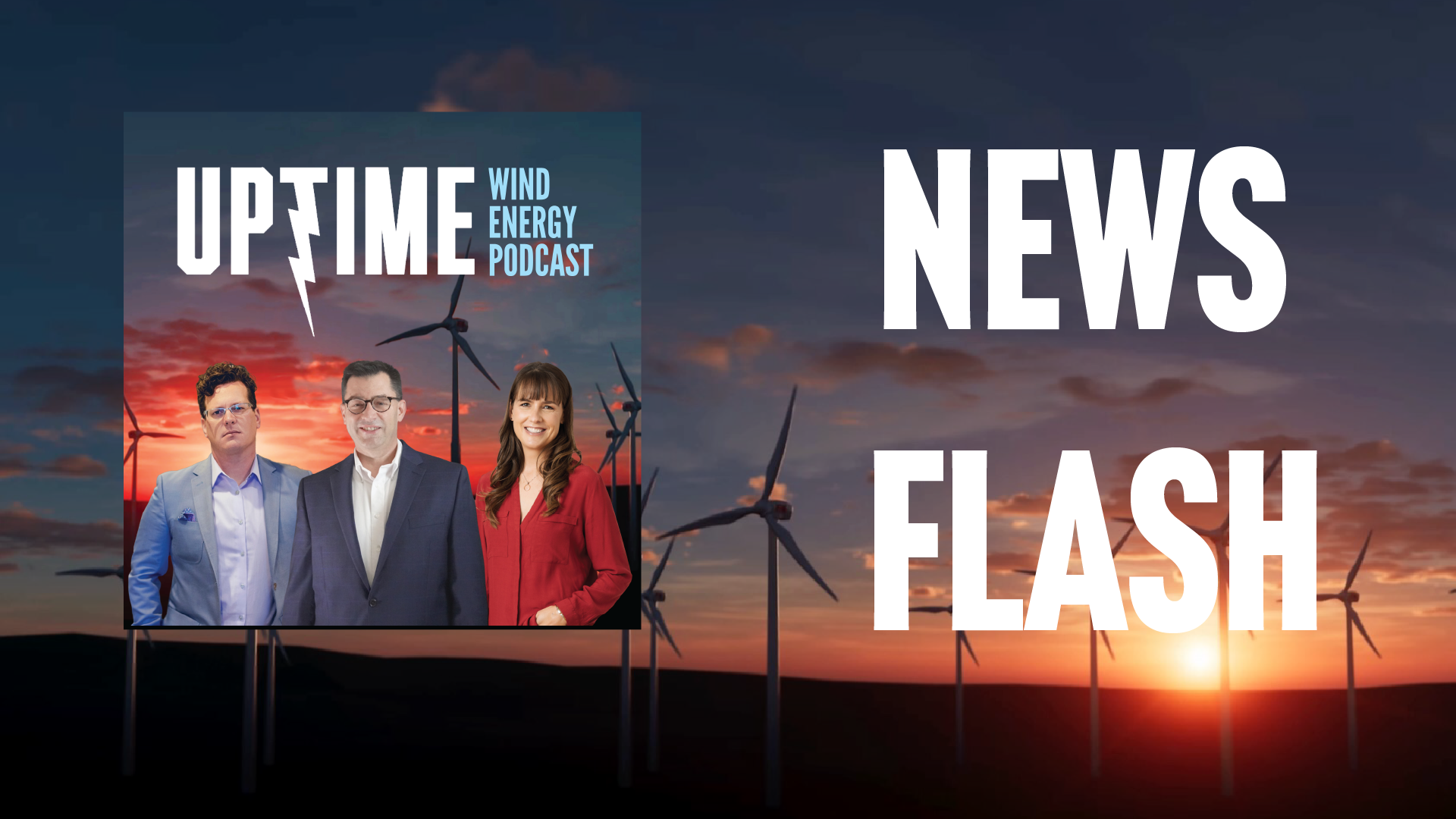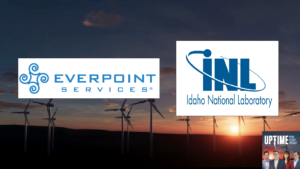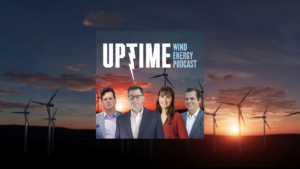In this News Flash: Adani Group’s new 5.2MW wind turbine will be introduced as part of Adani’s larger expansion into wind, solar, and green hydrogen. Nike is suing Avangrid for the $30M in ERCOT incentive payments received after the 2021 ice storm in Texas. And, the Venterra Group is acquiring the vibro-piling company CAPE Holland.
Pardalote Consulting – https://www.pardaloteconsulting.com
Wind Power LAB – https://windpowerlab.com
Weather Guard Lightning Tech – www.weatherguardwind.com
Intelstor – https://www.intelstor.com
Podcast: Play in new window | Download
Sign up now for Uptime Tech News, our weekly email update on all things wind technology. This episode is sponsored by Weather Guard Lightning Tech. Learn more about Weather Guard’s StrikeTape Wind Turbine LPS retrofit. Follow the show on Facebook, YouTube, Twitter, Linkedin and visit Weather Guard on the web. And subscribe to Rosemary Barnes’ YouTube channel here. Have a question we can answer on the show? Email us!
News Flash August 17
Allen Hall: I’m Allen Hall and I’m here with the founder and CEO of Intelstor Phil Totaro, and this is your News Flash. Over in India, the Adani group will be unveiling its new 5.2 megawatt wind turbine, which it just received a provisional certificate for. The turbine will be built with technology from W2E or Wind to Energy which is based in Germany.
Turbine is touted as India’s largest wind turbine and one of the world’s largest onshore machines. Adani Group is emphasizing local sourcing for projects for this wind turbine, and it’s also involved in solar and green hydrogen. And Phil, it seems like part of the output of these wind turbines and 5.2 megawatt is a big machine, is that they’re headed to create green hydrogen over in India.
Phil Totaro: Absolutely. So Adani Group, for those that don’t know, is owned and controlled by one of the wealthiest families in in India. And they’ve made significant strides in investing in project development through Adani Energy in various subsidiaries there as well as other countries throughout.
Southeast Asia. They definitely have an interest in kind of expanding what they’re doing. But this is interesting because they’re, they’re kind of adopting the same type of business model that a lot of the western European OEMs had going back a few decades where they’d, they’d have their development arm and then they’d have like a, a turbine or in their case, they’re also pursuing a significant amount of solar manufacturing capacity.
They actually, it’s, it’s gone largely unnoticed. And I, I’m glad we’re talking about this today. ’cause it did come out in, in the news but they also raised more than $300 million to support this wind turbine manufacturing capacity and their solar manufacturing capacity in India. So, they have very big designs on expanding their capability and, and being a serious player in a global market.
Allen Hall: Avangrid seeks dismissal of Nike’s $31 million lawsuit related to the Texas freeze in 2021. Avangrid is defending itself and maintains that the wind farm, that was, that did get frozen and the payments that happened from ERCOT, which it received almost $30 million for, belong to Avangrid.
Nike disagrees. Nike thinks part of its virtual power purchase agreement that Avangrid owes them that money. Now, Phil, can you explain where this money is coming from ERCOT to begin with?
Phil Totaro: wYes. So this goes back to, as you mentioned, this issue in Texas where there was a freeze in. You know, kind of average temperatures wind energy, a lot of wind energy tripped offline.
Solar and natural gas pipes froze. There was a, you know, unfortunately a few people died from this. And it was a, it was altogether a terrible situation. Where the money’s coming from is basically, ERCOT has said that. Alright, we’ll cover. Certain fees up to a point. ’cause you know, the intraday price for, for power on the merchant market spiked to like something like $9,000 a megawatt hour or some preposterous number.
And so they said, all right, well, we’ll cover you a little bit of that money, but. You according to whatever type of commercial agreement you have with whatever power off taker there is. And in this case, it’s, you know, Avangrid is a subsidiary of Iberdrola in the US and and Nike. It’s gonna come down to whatever terms they had in that virtual PPA that basically dictates how much of the money.
Actually does belong to Nike. It’s, I not having seen their specific agreement. I can’t say whether or not Nike’s actually entitled any of this money, but it’s certainly a distinct possibility because this isn’t the first time that a lawsuit like this has happened. Citigroup has also gone after some of the IPPs in Texas.
And there’s, it, it’s still being litigated. So I don’t think this is the end of, of this situation either.
Allen Hall: It seems like from Avangrid’s point of view, that they did a tremendous amount of work to keep their assets running during that, that freeze and their employees work really hard to to do that.
And as part of that effort, they got paid by ERCOT $30 million and that their claim is, and contractually, they seem to be arguing contractually that Nike is not entitled to that, to those funds. It’s, it’s surprising to me that Nike, Nike, Nike and Avangrid are in the same place, right? They’re both in Oregon, so they’re suing one another in state court up in Oregon.
Phil Totaro:
And what’s what’s interesting, I guess, is again, it depends on what’s specifically in their, their power purchase contract. The only thing I could think that might entitle Nike to any money would be the liquidated damages associated with any downtime. But again, because this was a force majeure type of, you know, natural catastrophe event, I, I, I mean, I’m unfortunately not a lawyer, so I can’t really speculate on how that’s gonna play out.
But like I said, I mean, there, there are multiple cases that have been filed in Texas, in New York and now in Oregon that are dealing with this, this exact same issue. Resulting from that same weather event in, in February,
Allen Hall: 2021, the Venterra Group is going to acquire the Dutch offshore company, CAPE Holland.
And CAPE Holland’s specialty is vibration pilings where they drive large model piles and using a vibration technique and, and really complicated equipment. It, it’s super cool to watch on YouTube. This acquisition is going to enhance Venterra’s foundations in offshore wind services. Now, Phil, this seems like an obvious connection of two companies that are gonna be an offshore wind CAPE Holland with massive capabilities and obviously Venterra Group and just being a, a large industrial company.
Seems like a good fit.
Phil Totaro: Yeah, and like you mentioned, I mean, the CAPE Holland technology is, is incredibly exciting and fascinating. Like it’s, it is cool to watch this, this vibration piling concept. Sadly, it doesn’t work in all soil conditions, although I’m sure there’s ways of, you know, kind of enhancing some of the technology to be able to handle that for, for kind of all monopiles, everywhere.
But what they’ve been able to do with some trial runs, I think they’ve done I wanna say in. Holland, and maybe they did a demo in Belgium or Germany. I, I kind of forget unfortunately. But they’ve, they’ve been kind of developing this technology for a while and it, it’s actually a really great fit for for somebody like the Venterra.
Allen Hall: It’s a low noise method of driving monopiles. Noise is an issue, particularly the United States. There’s a lot of concern about that with all the, the sea life whales in, in particular, that they wanna do it as quietly as possible. This is one of the ways to do it. So I, I’m curious if this is focused on the United States, because it would make a lot of sense.
Phil Totaro: It will be possible to use in the United States. Actually, that’s a great point because our project, a lot of our project sites are at just the right kind of distance from shore and just the right water depth. We also do have areas where you wouldn’t be able to necessarily use other types of technology.
So this viral piling would be a a great fit for that. We’ve got certainly in the areas around South Carolina, for instance, where the Kitty Hawk project will, will go and even maybe the coastal Virginia offshore wind project where you’ve got the kind of soft soil. This is a great fit for, for those type of projects.
Allen Hall: Yeah, it’s a cheaper, faster way of driving. Monopiles really smart acquisition by Venterra. To learn more about mergers, acquisitions, and partnerships in wind energy, check out Intelstor at intelstor.com.











